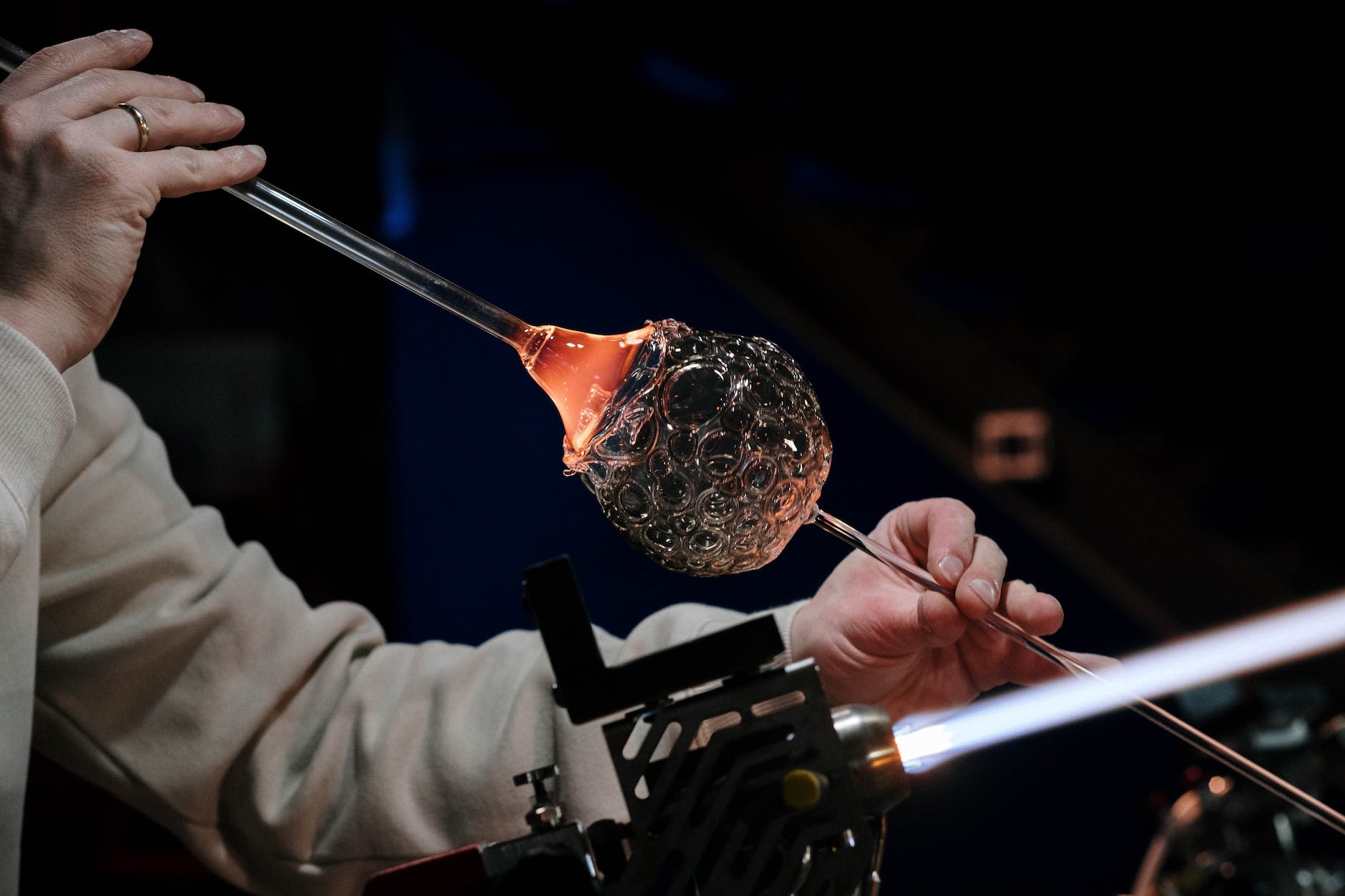Pushing the Limits: Advanced Glassblowing Techniques for Artists
While fundamental skills like gathering, blowing, and annealing provide the essential foundations, master glass artists utilize advanced specialty techniques to create one-of-a-kind works. Exploring selected innovative methods for pushing technical limits reveals the immense creative versatility accessible through this molten medium.
Flameworking
Also called lampworking, flameworking adapts glassblowing skills on a miniature torch-based scale. Artists use handheld torches to melt and shape thin glass rods rather than working in furnace environments. Intense concentration manipulates details.
Flameworking allows intricate patterning, beads, and small-scale sculpture encasing. Paired with traditional blowing, flameworking applies elaborate surface embellishments through twisting, layering, and stamping color fragments onto larger pieces. Fine tips access minute detail.
Pâte de Verre
Meaning “paste of glass” in French, pâte de verre involves hand-sculpting artworks by pressing soft glass powder and fragments into molds. Once hardened in a kiln, the glass takes on the intricate modeled form in solid form. Intricate patterns get stamped into the matrix.
Invented by French artist Henri Cros, this rare technique skips blowing entirely. The granular glass medium has a clay-like tactile moldability ideal for subtle handcrafted shaping before firing. Abstract sculptural shapes emerge from glass particles rather than liquid light.
Graal and Battuto Techniques
Developed on the Venetian island of Murano, Graal and Battuto techniques add stunning visual intricacy to blown glass. The Graal method involves blowing and faceting clear outer layers while coating inner layers with etching and color for kaleidoscopic optical effects. Battuto utilizes chipped glass fragments and gold leaf between layers to achieve glittering surfaces.
These signature techniques require masterful layering of multiple gatherings into one cohesive piece with decoration sandwiched in between. When illuminated, the embedded fragments produce dazzling surfaces full of depth and visual complexity through skilled illusion.
Incalmo Glassblowing
The sophisticated Italian Incalmo technique fuses separate blown glass vessels seamlessly together through expert precision and timing. Two pieces get perfectly matched before being heated and fused into one with an imperceptible joint.
This allows integrating different colors patterns into one hybrid piece, and enables handles, lips, and other functional or decorative elements to be joined to principal forms. Well-executed Incalmo marries multiple blown sections into integrated works of art.
Caneworking
Caneworking involves creating intricate glass rods with layered patterns called murrine for incorporation into other blown glass pieces. Skilled cane makers fuse variously colored rods into mesmerizing designs like zigzags, stars, lattices, or millefiori flowers in cross-section. When sliced into discs and merged into blows, these murrine disperse spectacular optics throughout finished works.
Endlessly creative cane patterns dramatically increase the visual intricacy achievable in larger glassblowing compositions. Master cane makers exemplify glassblowing’s potential for elaborate precision.
Kiln Casting and Mold Blowing
While most glassblowing manipulates freeform shapes from molten gathers, kiln casting and mold blowing impart predefined forms through custom molds. Kiln casting presses powdered glass into ceramic molds before firing to fuse intricately detailed castings. Blow molding blows glass into shaped forms.
Combined with modeling, 3D scanning, found object impressions, and other moldmaking techniques, these processes allow detailed replication and unique art glass architectural elements. Molds enable exacting forms impossible through free blowing alone.
Pushing Creative Boundaries
Rather than loyalty to any single technique, the most innovative glass artists maintain openness to hybrid approaches that best execute their vision. They master fundamentals to intuitively play with more advanced methods as artwork requires. Each addition broadens the palette available to realize creative goals.
Experimental techniques unsettle stagnant assumptions about glass and breathe new vitality into ancient craft. When grounded in disciplined mastery, boundary-pushing methods provide paths to blow past perceived limitations. The blazing trail lights the way for imagination to guide glassblowing into its next era.
